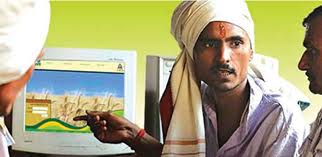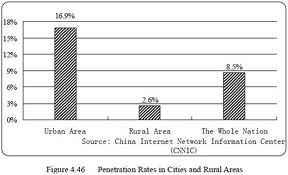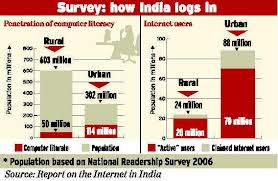Why the Internet has not contributed to human welfare at large?
The benefits of internet has not reached rural areas yet!
Why we have not progressed in spite of enormous information access? Why the internet, though a fine tool for human welfare has failed to fulfill the needs of human society at large? These are really some pertinent questions that are pestering the mind of many. The spread of internet in the last two decades is mind boggling. Even people from rural background have started using it. The great digital divide between urban and rural populations is being bridged by many subsidized programs mooted by the government. Of course, India was late to pick up the technology and started using it usefully only in the last decade. Banks, shops and hospitals have started using it in India in the last decade. But the penetration in India seems very good compared to other countries. Originally only some Public Sector Units were involved in giving broad band connections. But the government has started offering the licenses to private players in the past decade. This has brought the cost of data comparatively less compared to other countries.
Now reverting to the questions, “why the internet has not contributed to human welfare’, we have to go deep into the problem and their solutions. Initially, the government was not interested much in e-governance. Only after persistent demand from public, certain basic essential needs were brought under e-governance. Especially the Railways needed digital governance since manual management of Indian Railways has become a tedious process. Lot of delays was felt in decision making and conveying the decisions of Railways administration to all units. Ticketing was one big challenge and reservations needed lot of data sharing between various divisions of Railways which are spread along the length and breadth of the country. Simultaneously banks needed better control and with the digitalization of all the accounts, it has become possible to handle the huge volume of money transactions. Likewise, hospitals, health care management, material management everything needed fast solutions. Due to compulsions, most of the major Industries started adopting e-governance or management which has started yielding quick results.
The major population of a country lives in rural areas. Hence connectivity has become a bigger problem. Agriculture is one of the chief occupations of rural populace. Animal husbandry and diary management followed suit. Though the urban population has quicker access to resources, the rural population is way behind. Hence the government has made it mandatory for public sector units involved in rural telephone to plan and extend internet connectivity to the most backward areas of India. Since the public sector units are already reeling under huge financial pressures, incurring losses in extending rural networks has affected its finances very badly. All the private sector players concentrated on major cities and towns where mobile and internet communication spread like wildfire. But in rural areas such ventures would bounce back and hence the private telecom operators do not venture much in rural areas. Hence it has become incumbent on the public sector telecom operators to cater to the needs of rural areas. The progress is slow and hence internet usage in rural areas is very much less. In fact, the rural population needs more access to know about the best agricultural practices, the availability of seeds and fertilizers etc.
The location of Banks and ATM facility decide the financial access of the rural areas. They need to travel miles to access banking and other facilities. This affects their venture in agricultural activities. Besides this, access to hospitals and health centers is one of the basic needs for rural population. Hence unless the government makes concerted effort to provide the last mile connectivity to every village, the benefits of the government programs will not reach them quickly. First, all information should be made accessible to all the villages through information centers. They will be able to contact the authorities concerned through these centers and get replies to their queries. Unless the government enacts such laws to connect all parts of the country reasonably, the benefits of internet will not be passed on to the rural public.
Rural net access-facts and figures.








